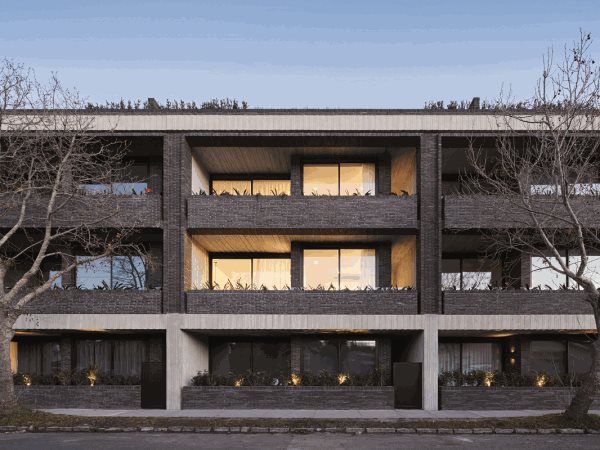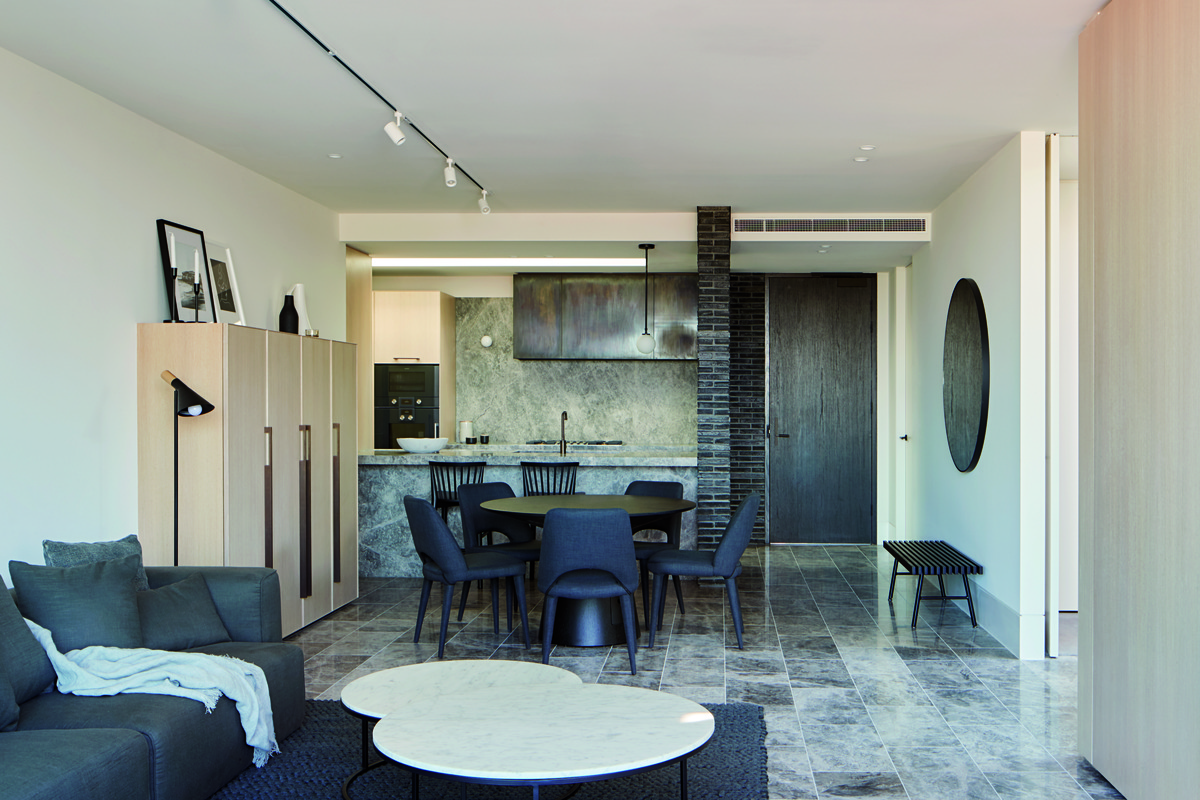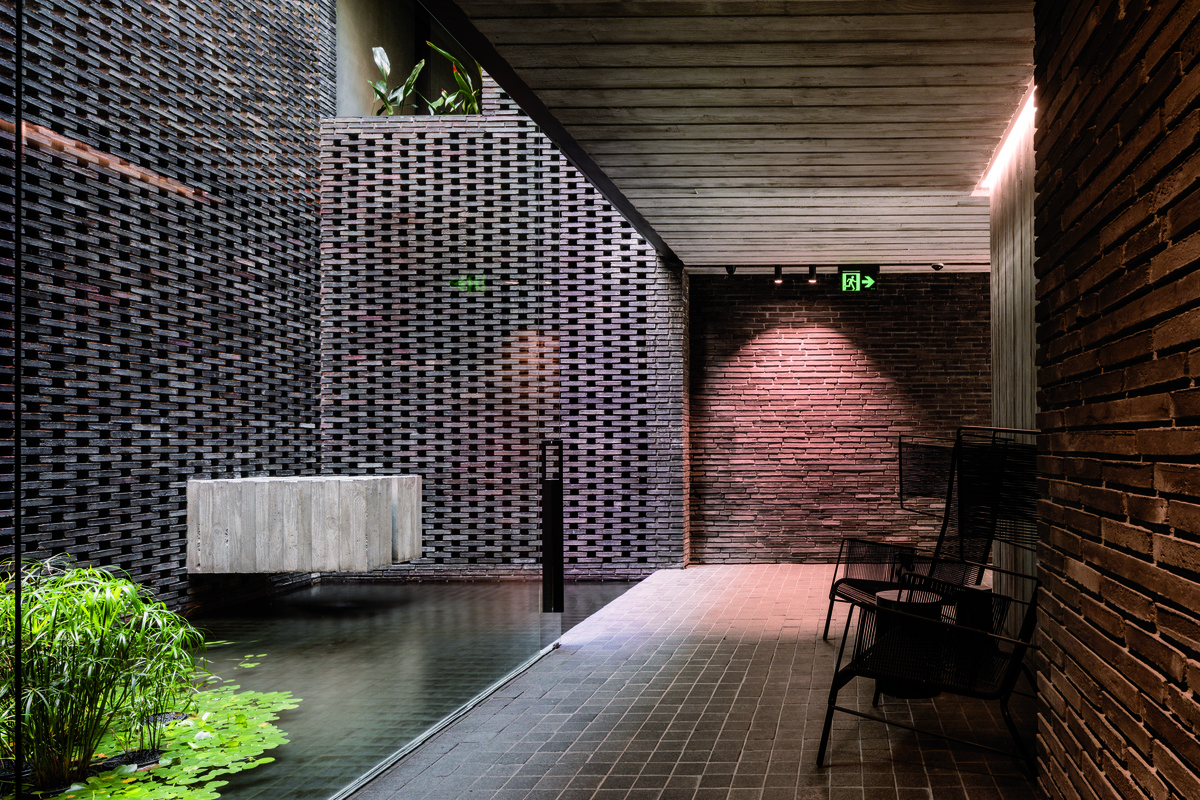
From the architect:
Elwood House integrates seamlessly into its leafy historic neighbourhood. Reflecting the local grain and scale of its established beachside village, the development evolves this legacy into a refined level of detail, transforming the typically low-scale residential language of the area into a contemporary interpretation of multi-residential living.
With architecture by Woods Bagot, the scheme draws on the character of its immediate context to influence the built form. The building's brickwork is a modern interpretation of a material ubiquitous to the area, and is used in association with board form concrete – a material that has fascinated the firm since its use at Sydney’s Ivy and thereafter on Melbourne’s Garden House. Together, these two materials are consistent across each detail of the development, from the architecture through to the interiors.
Each of the apartments is unique, designed as individual houses for local owner-occupiers looking to downsize into a more compact residence. This approach represents a fundamental shift in apartment typology planning, with each dwelling a bespoke solution as opposed to the streamlined uniformity typical to multi-residential developments.
In collaboration with Piccolo Developments, Elwood House was designed with deep openings in the facade to elaborate on the idea of decoupling adjoining units and provide occupants a sense of space and individuality.
According to Woods Bagot CEO Nik Karalis, the architectural form illustrates a change in the way multi-residential projects are approached, pointing out that the results provide an elevated living experience for the owners with consideration for both privacy and community.

Respecting the surrounding bayside neighbourhood, the apartments provide a series of aggregated independent houses that reduce the effective length of the façade, allowing the building collective to breathe and provide good cross-ventilation through the living spaces of each apartment. Concrete soffits are expressed to the balconies and internal livings areas, providing the occupant with a sense of space and a tactile connection with the building materiality and construction methodology. All master bedrooms feature a window above the bed head with operable shutters to reveal the narrow internal-facing courtyard.
At ground level, the facade to Ormond Road is hard edged to the boundary, reflecting the typical terrace house typology of the surrounding neighbourhood. Each residence has its own entry gate and small landscaped front yard. Light is drawn into the lobby space via a large brick atrium stacked above a reflective pond. Imbuing tranquility and spirituality, the water feature and entrance sculpture provide residents with a moment more typically found in a stand-alone house than an apartment dwelling.

In turn, this assists with the overall scaled-down and tailored ambiance of the building. Apartment interiors were conceived in partnership with Hecker Guthrie and feature materials chosen to complement the raw aesthetic of the building. Joinery elements are clad in either grey, stone or bronze and – in a deliberate shift away from wall-to-wall infills – the quality of the raw materials can dominate.
Offering ‘empty nesters’ the same level of comfort and liveability of their large family homes, owners are encouraged to participate in curating their residences, with all elements present on a more intimate scale.

